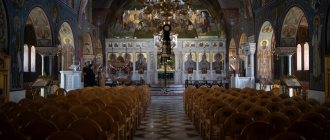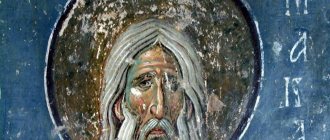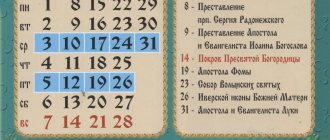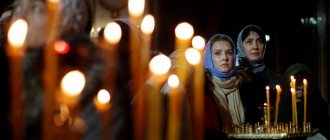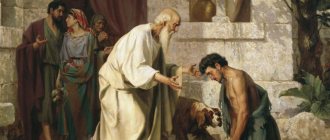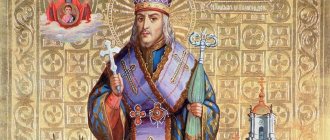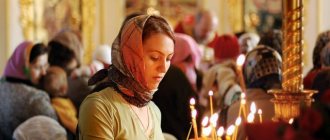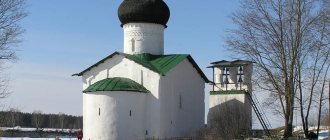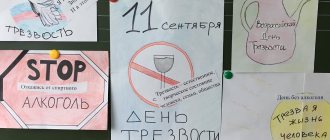Elisaveta Feodorovna
E.F. was actively involved in works of mercy. She was the chairman of the Petrovsky Charitable Society in St. Petersburg, the Shelter for Weak and Convalescent Children, the Tsarskoye Selo Charitable Society, and the First St. Petersburg Ladies' Committee of the Russian Red Cross Society. In 1896, she founded the Elisabeth community of sisters of mercy in St. Petersburg, which she regularly visited, despite moving to Moscow, and was present at the consecration of the community buildings and the temple in the name of the Great Martyr. Panteleimon, worked with board reports.
The grand ducal couple paid attention to the celebration of the Great Martyr's Day in Moscow. George, especially celebrated the Knights of St. George on this day. E.F. was the chief of the 51st Chernigov Dragoon Regiment. She participated in charity bazaars and in organizing Moscow flower festivals (the first one took place on May 20, 1901). The proceeds from these events went to charitable causes. E.F. was the chairman of the society for helping victims of the flood of 1908.
Vel. Kng. Elisaveta Feodorovna. Portrait. 1901 Artist. V. K. Shtemberg (Tretyakov Gallery) Vel. Kng. Elisaveta Feodorovna. Portrait. 1901 Artist. V. K. Shtemberg (Tretyakov Gallery)
E.F. plays an important role in the development of museums, art, and music. and theatrical unions. She participated in the preparatory committee of the X Archaeological Congress, in the organization of excavations on the territory of the Moscow Kremlin, in the acquisition and donation of various exhibits (ancient coins, crosses, icons, ancient weapons) to the Historical Museum, and contributed to the opening of the Catherine, Vladimir, Suzdal and other halls of the museum. E.F. loved church singing and especially appreciated the Synodal Choir, caring about the preservation and development of the muses. and theatrical culture. For a number of years she was a trustee of the Philharmonic Society. With her participation, a shelter for elderly theater workers was created, congresses of the Theater Society and benefit performances of outstanding actors were prepared, etc. E. F. helped the Stroganov and Synodal schools, courses for nurses of the community of the Iveron Icon of the Mother of God.
The opening and consecration (January 18, 1904) of the Shelaputin craft schools took place with the support of E.F. January 17. In 1892, the Charter of the Elisabeth Society for providing assistance to children of poor parents was approved, and B. A. Neidgart was appointed its chairman. Children of low-income parents, orphans, who not only lived and were raised, but also received vocational education at the expense of the society, entered the nurseries, kindergartens, and orphanages of the society. Over 25 years of work, the society has opened dozens of orphanages in parishes of churches in Moscow and its districts and provided assistance to 9 thousand children. Having asked for a blessing from the Moscow Metropolitan. Leonty (Lebedinsky), E.F. divided the city into 11 deaneries, in which, in turn, more than 200 Elizabethan committees were formed. E.F. placed dean fathers at the head of the groups. Nurseries and shelters were created at each parish in the capital. Over the course of 20 years, the Elisabeth Charitable Society opened 36 institutions for the care of children. To reward those who have selflessly fulfilled their duty for a number of years, the Regulations on the badge of the Elizabethan Charitable Society were adopted, approved on May 2, 1900. The right to wear the badge of the 1st, 2nd and 3rd degree was certified by a diploma signed by E. F. The highest form of reward for the society was the inscription of the names of its members on marble plaques erected on the wall of the meeting room of the Council of the society.
The Society for the Care of Poor and Needy Children was created earlier than the Elisabeth Charitable Society, but work was suspended for several years due to financial reasons. years. The goal of the society was to teach a profession, regardless of social origin and age. In 1893, as a result of a petition from the meeting of trustees to the sovereign, E.F. took the society under his patronage. In 1895, thanks to significant donations from E.F., construction began on a house for the 1st shelter of the society. The protection of the rights of children who were subjected to torture in various craft institutions, the consideration of complaints about ill-treatment of them prompted the creation of a special Committee of the Society, headed by P. N. Obninsky.
E.F. was the honorary chairman of the Ladies' Prison Committee, which looked after children whose mothers were serving sentences. Sewing workshops were organized for women released from custody, where they received a salary and could provide clothing for themselves and their children. The Ladies' Committee organized a shelter for women released from prison. Since 1893, charitable activities in prisons have been marked with a sign in the form of a blue enamel cross, which was inserted into a metal circle with the inscription: “Correct through philanthropy.” In 1898, the Ladies Prison Committee created a school for prison matrons in an effort to introduce a culture of communication into the daily life of prisoners.
In the days of Russian-Japanese. During the war, E.F. began work to provide comprehensive assistance to the army: she opened a donation warehouse to help the wounded and those in need, and organized free accommodation for the sick and wounded returning from the war. The commission for the deployment of soldiers was part of the Special Committee of Her Imp. Highness's leader. Kng. Elisaveta Feodorovna (February 12, 1904 - September 1, 1907), who opened his lips. and district institutions of 807 hospitals throughout Russia (with the exception of St. Petersburg province and Finland) and provided assistance to 25,535 lower ranks and 1,350 officers. Gr. A. A. Olsoufieff recalled that “the Grand Duchess was completely absorbed in this work... she thought about everything that could help the health and well-being of the soldiers...” (Olsoufieff. 1922. P. 4). In the Kremlin Palace, E.F. organized the work of women. “It was a whole ministry... divided into 12 departments, each with its own functions and tasks in providing assistance to the front” (Ibid. P. 4-5). The main directions of this work: supplying warehouses of Her Imp. Highnesses in Liaoyang, Mukden (Shenyang), Harbin and Red Cross warehouses in Nikolsk (now Ussuriysk) and Chita with necessary items and medical supplies; equipment and maintenance of 9 flying sanitary detachments; supplying the necessary equipment and things to floating hospitals; equipping 4 stage hospitals for 200 people; equipment and maintenance of a detachment to combat infectious diseases, etc. Reports on the sending of donations to the front were published in the Weekly and various newspapers. E.F. was especially concerned about “helping the Russian people with their spiritual needs... by sending many camp churches equipped with everything necessary for worship” (Ibid. P. 4). Oct 25 In 1908, in the Moscow All Saints Grove, the Sergius-Elisabeth shelter for crippled soldiers, where they could learn crafts, was consecrated.
Vel. Kng. prmts. Elisaveta Feodorovna. Portrait. 1917 Artist. I. M. Mitrofanov (State Literary Museum of I. S. Turgenev, Orel)
Vel. Kng. prmts. Elisaveta Feodorovna. Portrait. 1917 Artist. I. M. Mitrofanov (State Literary Museum of I. S. Turgenev, Orel)
During the revolution of 1905, a decision was made to move the grand ducal family to the Kremlin. 4 Feb from an explosion carried out by terrorist I.P. Kalyaev on Senate Square. in the Kremlin, the leader died. book Sergey Aleksandrovich. This day was the last for E.F. in her social life. 7 Feb. E.F. went to the prison where Kalyaev was kept, left him the Gospel and an icon, after which she turned to Nicholas II with a petition to pardon Kalyaev, but the petition was rejected. At the site of her husband’s murder, E.F. erected a monument-cross, made according to the design of V.M. Vasnetsov. The words of the Savior spoken by Him on the cross were inscribed on the monument: “Father, let them go, for they do not know what they are doing” (cf. Lk 23.34). On the initiative of E.F., to preserve the memory of her husband P.V. Zhukovsky in Chudovoy in honor of the Miracle of the arch. Mikhail in Khoneh husband. mon-re in the Kremlin under the supervision of academician. R.I. Klein's temple-tomb was created. book Sergei Alexandrovich.
The Moscow December armed uprising of 1905 (on the occasion of the sovereign’s name day, E.F. was in St. Petersburg these days) gave E.F. the occasion to write that “the revolution cannot end from day to day, it can will only worsen or become chronic, which, in all likelihood, will happen. “My duty,” noted E.F., “is now to help the unfortunate victims of the uprising. I simply consider myself vile, staying here, I prefer to be killed by the first random shot from some window than to sit here with folded arms... You shouldn’t be afraid of death, you should be afraid of living” (Dzhunkovsky. 1997. P. 135).
E.F. chose a special form of asceticism - charity. She invested her capital in establishing a monastery of mercy. In 1907, she and Bud. the confessor of the monastery, Rev. Mitrofan (later Rev. Sergius (Srebryansky)) began to create a charter for the new monastery of sisters of mercy. In May of the same year, E.F. bought an estate with a large garden on Bolshaya Ordynka, where in October. opened an infirmary for the wounded. 20 Nov next year Moscow Metropolitan. sschmch. Vladimir (Epiphany) approved the Charter of the monastery, the purpose of which is “through the work of the sisters of the monastery of mercy and in other possible ways to help in the spirit of pure Christianity the sick and poor and to provide help and comfort to the suffering and those in grief and sorrow.”
10 Feb 1909 The Marfo-Mariinskaya Moscow convent officially began its activities. 9 Sep. of the same year, Bishop of Dmitrov. Tryphon (Turkestan) consecrated the 1st temple of the monastery - in the name of Saints Martha and Mary, the so-called. sick leave Apr 9 1910 in this church bishop. Tryphon ordained 17 sisters of the monastery, led by E.F., to the rank of cross, who took vows of obedience, non-covetousness and chastity without monastic tonsure and promised to do good deeds in the spirit of Christ. love, caring for the poor and sick. 10 Apr 1910 Moscow Metropolitan. Vladimir E.F. was confirmed in the position of abbess. The sisters were spiritually nurtured by Archpriest. Mitrofan Srebryansky and St. Alexy (Soloviev), mon. Zosimova is empty. Orthodox Christians could become sisters. widows and girls aged 21 to 40 years. They were divided into crusaders (more experienced) and students. All sisters, after undergoing appropriate training at the monastery, were required to visit the poor and provide assistance to them. The monastery taught nurses free of charge, gave out medicines, carried out electrotherapy, gave massages, injections, and operated on; the library was open; a shelter for orphans, a Sunday school, and a canteen for the poor were created, in which over 300 lunches were prepared daily.
In addition to the indispensable participation in divine services, twice a week the confessor of the monastery held conversations of a catechetical and patristic nature with the sisters. Akathists were read in the monastery church 4 times a week. Upon initiation, the sisters received a cypress cross on a white ribbon (with the image of the Savior Not Made by Hands and the Protection of the Blessed Virgin Mary; on the reverse side there are images of the holy wives Martha and Mary) and a rosary. Every day everyone had to say 100 Jesus prayers. The interior of the monastery was dominated by white color; light-colored chintz was used for decoration. The sisters wore light long dresses specially made for them and white apostolics, reminiscent of the robe of St. Elizabeth of Thuringia. In 1911, E.F. submitted a petition to the Holy Synod to confer the title of deaconesses on the elder sisters of the Martha and Mary Convent. The resolution of the issue was postponed until the Local Council of the Russian Orthodox Church.
In 1908-1912 The Intercession Church of the monastery was built in the Novgorod-Pskov style of the 16th century. according to the project of architect. A. V. Shchusev and painted by the artist. M. V. Nesterov. P. D. Korin painted the underground temple-tomb. 8 Apr. In 1912, the consecration of the Metropolitan Church took place. Vladimir, bishop Trifon and Bishop of Serpukhov. Anastasy (Gribanovsky). The activities of the Martha and Mary Convent were aimed at supporting the poor, sick and suffering. The sisters served in the free institutions of the monastery: a hospital, an outpatient clinic, a pharmacy, an orphanage, a Sunday school, a library, a canteen for the poor, and a home for consumptive women on Donskaya Street. At the monastery, the sick also received spiritual help: unction, conversations, prayers, daily services for the sick in the center. Saints Martha and Mary. Since the autumn of 1913, the sisters provided medical assistance to the inhabitants of the Khitrov Market shelters, and homeless children were transferred to shelters.
Simultaneously with the creation of the Marfo-Mariinsky monastery in Moscow, under the leadership. E.F. in Sergievsky Posad in 1910-1911. The Mariinsky Shelter (shelter) was built and opened for elderly nurses of the Red Cross, who followed. disability or age required care. A house temple was built in the shelter in the name of Equal Apostles. Mary Magdalene, whose rector E.F. appointed priest. Pavel Florensky (see: Andronik (Trubachev), abbot. The sacrament of the priesthood in the fate of Father Pavel Florensky // Now and forever: Russian magazine for reading. 2006. No. 3-4).
An outpatient clinic was established in the shelter. led book Sergei Alexandrovich, the region served the poor population of Sergievsky Posad. During the war of 1914-1918. the shelter accepted wounded soldiers for treatment, despite their age, they were cared for by elderly nurses.
Vel. Kng. Elisaveta Feodorovna. Portrait. Beginning XX century Artist F. A. von Kaulbach (GMZ “Pavlovsk”)
Vel. Kng. Elisaveta Feodorovna. Portrait. Beginning XX century Artist F. A. von Kaulbach (GMZ “Pavlovsk”)
E.F. slept on a wooden bed without a mattress, with a hard pillow, 2-3 hours a day, prayed in church at midnight, and visited the sick in the infirmary. E. F. devoted her time free from charitable work to pilgrimage trips. She repeatedly visited the Trinity-Sergius, Kiev-Pechersk and Pochaev Lavra, Optina Monastery, Savvin Storozhevsky Monastery, Tikhonova Monastery, Solovetsky, Sarov, New Jerusalem Monastery, Sergius Monastery, Zosimova Monastery, monasteries located near S. -Petersburg, as well as other ancient mon-ri. E.F. participated in holidays glorifying God’s saints, such as St. Seraphim, abbot. Sarovsky, sschmch. Ermogen, and in the celebrations associated with the secondary acquisition of the relics of the king. blgv. Anna Kashinskaya. In a letter to Nicholas II, E.F. called the days spent in 1909 in Kashin “an ideal repetition of Sarov” (GARF. F. 601. Op. 1. D. 1254). E.F. comprehended the meaning of “spiritual teaching” through pilgrimage and in the process of reading hagiography and patristic literature, as well as in conversations with the schema-archim. Gabriel (Zyryanov), priests Alexy and German Zosimovsky, schema abbot. Spanish Tamar (Mardzhanova), Optina elders hieromonks Reverend Nektarios (Tikhonov) and Anatoly (Potapov).
E. F.’s pilgrimage to the mon-ri of the Urals was interrupted by the First World War. In Moscow, E.F. organized a Committee to provide charitable assistance to the families of persons called up for war. A hospital was opened at the Marfo-Mariinsky Convent. During the war days, E.F. headed dozens of institutions as a trustee or chairman. On July 29, 1914, at a committee meeting held in the house of E. F. in the Martha and Mary Convent, it was decided to open a permanent coordinating body (committee office) and to begin accepting monetary and clothing donations, as well as to establish the “Weekly” , in which all these issues will be covered. One of the main tasks of the committee was to provide work for the wives of soldiers called up for war. The houses of the Governor General, the Russian Noble Assembly and Starogostiny Dvor were given over to the workshops. The families of soldiers were also provided with agricultural assistance, and the children of those drafted to war were provided with everything they needed. 27 Sep. 1914 committee led. The princess decided to open a number of institutions for orphans. At the call of E.F., Russian actors and artists carried out charitable work in favor of soldiers and their families. A kind of help to the front was the publication of postcards and reproductions of paintings by great Russians. artists (for example, a reproduction of Nesterov’s painting “Mercy”) and E.F.’s drawings, calendars, etc. E.F. sent Russian soldiers. armies of several compositions with Christmas gifts. In 1914, the republished E.F. book went on sale. "Under a gracious sky"; the profits made from the sale of the book were donated to the children of the warriors. E.F. attracted outstanding artists to this publication: Nesterov, V.D. Polenov, N.K. Roerich, Korin and others.
E.F.’s committee collected funds to support homeless children in shelters and complete the construction of premises for children’s labor cooperatives. Committee funds raised from the moment of its creation until January 1. 1916, allowed to provide assistance to the families of 75 thousand conscripted soldiers, 45 thousand children of soldiers lived in shelters (including 30 thousand toddlers); 7.8 million meals were provided to those in dire need; 25 thousand people whose relatives were drafted into the active army were accommodated in free and cheap apartments and received benefits; More than 25 million items of uniform were manufactured for the needs of the army; approximately 89 thousand families of soldiers were provided with fuel free of charge or at a reduced price; received cash benefits approx. 341.5 thousand families; the total number of registered needy families of soldiers who received this or that assistance from E.F. institutions exceeds 895 thousand. The vast majority of the requests of those in need were satisfied. In 1914, E.F. began work on organizing the Fraternal Cemetery at the Church. All Saints in Vsekhsvyatskoe, on which the Church of the Transfiguration of the Lord was built according to the design of the architect. Shchuseva.
In June 1915, the Grand Duchess's committee decided to allocate 500 thousand rubles. to expand the Sergius-Elisabeth shelter for crippled soldiers, where wounded soldiers and children of dead soldiers studied shoemaking, tailoring, and bookbinding. E.F. was involved in preparing and sending marching churches to the front. In 1915-1917 Unfounded accusations against the imp. have become widespread in society. Alexandra Feodorovna and E.F. in espionage for Germany. E.F. in letters to the emperor. Nicholas II noted that G.E. Rasputin was “in spiritual delusion,” the relationship between E.F. and the imp. Alexandra Feodorovna's situation worsened sharply due to disagreements over Rasputin's assessment.
13 Apr 1916 Met. Macarius performed the Divine Liturgy in the Church of the Martha and Mary Convent and a thanksgiving prayer on the occasion of the 25th anniversary of E.F.’s joining the Orthodox Church. Churches. On this day, Rev. sschmch. John Vostorgov, addressing the believers gathered at the monastery, noted that he led a life. The princess testifies to the truth of her faith. “In such Christianization,” said Fr. John, - when “life is true,” and spiritual progress occurs... Orthodoxy cannot now be taken from it even at the cost of martyrdom...” (Moscow. TsVed. 1916. No. 17. P. 226-230).
After the February Revolution, private charity was stopped. On March 10, 1917, an order was issued by the Commissioner of the Provisional Government of Moscow on the appointment of V.N. Grigoriev as a commissioner of all institutions that were under the jurisdiction of E.F. On March 24, E.F. resigned from her duties as chairman of the Committee for the provision of charitable assistance to the families of persons called up to war.
Aug 26 In 1917, a temple was consecrated in the Martha and Mary Convent in honor of the Ethereal Powers and all the saints. 21 Nov E.F. was present in the Assumption Cathedral of the Moscow Kremlin at the enthronement of His Holiness the Patriarch of Moscow and All Russia, St. Tikhon (Bellavina) (see: Urusova N.V. Maternal Lament of Holy Rus'. M., 2006. P. 112). 24 Jan 1918 E.F. ordered Korin to paint the image of the prophet. Elijah (in the collection of I. S. Ostroukhov). Perhaps this was the last order of E.F.
I. K. Kuchmaeva, L. B. Maksimova
Icon of Saint Elizabeth
Permission to transport the coffins was received by Hegumen Seraphim, friend and confessor of the Grand Duchess Elizabeth Feodorovna. Six bodies were buried in April 1920 under the shadow of the Church of St. Seraphim of Sarov at the Russian Ecclesiastical Mission in Beijing.
The bodies of the holy martyrs Grand Duchess Elisaveta Feodorovna and nun Varvara were escorted further to the Holy Land, Jerusalem, and were laid to rest in the tomb at the Church of St. Equal-to-the-Apostles Mary Magdalene.
The burials of the remains of the remaining martyrs remained in the Russian Spiritual Mission (now the Russian Embassy) until 1947. In 1947, on instructions from Moscow, they were interred in an Orthodox cemetery near the Andingmen city gate. After 1988, when the cemetery was finally liquidated, a park was laid out on its territory, and a golf course was built on the site with the burials of the martyrs.
In 1992, the Council of Bishops of the Russian Orthodox Church canonized Grand Duchess Elizabeth and Nun Varvara as Holy New Martyrs of Russia, establishing a celebration for them on the day of their death, July 18 (New Art).
Akathist to St. prpmts. Elizabeth
On September 17 and 18, 2021, commemorative events will be held in Yekaterinburg dedicated to the day of the angel of the Reverend Martyr Grand Duchess Elizabeth Feodorovna Romanova, the founder of the Marfo-Mariinsky Convent in Moscow, which became a symbol of mercy and sacrificial love for the Fatherland and her neighbors. Memorable events will take place in the year of the centenary of the martyrdom of the Grand Duchess - in 1918, on the night of July 17-18, Elizaveta Feodorovna and her companions were thrown alive into a mine near Alapaevsk.
The event in memory of the Venerable Martyr Elizabeth Feodorovna takes place with the blessing of Metropolitan Kirill of Yekaterinburg and Verkhoturye, continuing the series of memorial events within the framework of the Royal Days in the year of the centenary of the feat of the holy Royal Passion-Bearers and Alapaevsk Martyrs.
On Monday, September 17 at 18:30 in Yekaterinburg there will be an action in memory of the Reverend Martyr Grand Duchess Elizabeth Feodorovna. The action will begin in the park next to building No. 19 on Lenin Avenue. Here in May 1918, the Venerable Martyr Elizabeth lived with other members of the House of Romanov before being deported to Alapaevsk. Nowadays, the building of the former hotel - the so-called “Ataman Rooms” - is occupied by the FSB and the Central Internal Affairs Directorate.
The next day, September 18, at 09:00, the Divine Liturgy will be celebrated at the parish in the name of the Reverend Martyr Grand Duchess Elisaveta Feodorovna (65 Yerevanskaya St.). Then the participants of the service will visit the Shelter of Mercy operating at the parish for the seriously ill, disabled, infirm, elderly, war and labor veterans, and the homeless. Here, sisters of mercy carry out their service around the clock, following the example of the holy Grand Duchess Elisaveta Feodorovna, who, as a member of the royal family, created the Martha and Mary Convent in Moscow and served the needy.
The date of the event is not accidental: on September 18, the Church celebrates the memory of Saint Elizabeth of Thuringia, the heavenly patroness of the Grand Duchess, whose life was for Elizabeth Feodorovna an example of love for man and the fulfillment of God's truth on earth. Elizabeth of Thuringia, who lived in the 12th century, was the daughter of the Hungarian king. Having received an excellent education, at the age of 14 she married Ludwig IV, Landgrave of Thuringia. At the same time, she became acquainted with the life experience of Franciscan monks who preached complete self-giving in the name of merciful love. Since then, all the forces of Elizabeth of Thuringia were aimed at helping the poor and disadvantaged.
The daughter of Elizabeth of Thuringia became the founder of the Landgraviate of Hesse. But Grand Duchess Elizaveta Feodorovna was connected with Saint Elizabeth not only by blood.
Saint Elizabeth, how prayer helps
Being a princess, the granddaughter of Queen Victoria of England, she received an excellent upbringing and education, was distinguished by delicate taste, and was knowledgeable in music and painting. On the initiative of her mother, the future Grand Duchess and her brothers and sisters visited the hospital. Inspired by the example of her heavenly patroness, Elizaveta Feodorovna from an early age tried in every possible way to help the subjects of her land. She showed the same concern for the people of her new fatherland - the Russians. All over the country, shelters and houses of contempt were opened, the chief of which was the Grand Duchess. Elizaveta Feodorovna’s natural intelligence and tireless energy made it possible to bring the work of charity to a high level, and the dedication with which the Grand Duchess acted inspired hundreds of people to follow her example.
Despite all the trials (the early death of her mother, younger sister and brother, the murder of the husband of Grand Duke Sergei Alexandrovich, the revolutionary turmoil of 1917 and the brutal reprisal of members of the Romanov dynasty), Saint Elizabeth Feodorovna maintained faith in God’s Grace and herself was a support for people in need of strengthening the spirit and helping in everyday hardships.
The organizers of the action on September 17 are the Missionary Department of the Yekaterinburg Diocese and the St. Elizabeth Minor Orthodox Brotherhood.
Everyone is invited to join the action. The event will end with the laying of flowers at the memorial plaque mounted on the wall of the building at 19 Lenin Ave.
[ad01]
Having married Grand Duke Sergei Alexandrovich, Elizabeth took up works of mercy
When Elizabeth grew up and entered the period of girlhood, they began to look for a spouse for her. At one time, her cousin Friedrich of Baden was considered as a potential groom. In addition, there is unconfirmed information that another cousin, the Prussian Crown Prince Wilhelm, made her an unaccepted marriage proposal.
In 1884, Elizaveta Feodorovna became Grand Duchess of the Imperial House of Romanov by marrying Grand Duke Sergei Alexandrovich, brother of Emperor Alexander III of Russia. Elizabeth's husband was both a great-uncle (common ancestor - Wilhelmina of Baden), and a fourth cousin (common great-great-grandfather - Prussian King Frederick William II).
Elizaveta Fedorovna and Sergei Alexandrovich. Elizaveta Feodorovna became the wife of Grand Duke Sergei Alexandrovich, despite the fact that Prussian Crown Prince Wilhelm offered her hand and heart
The couple began to live in the Beloselsky-Belozersky palace acquired by Sergei Alexandrovich, which became known as Sergievsky. Subsequently, they also lived in the Ilyinskoye estate near Moscow.
On April 13, Elizaveta Fedorovna converted from Lutheranism to the Orthodox faith. In the same year, Grand Duke Sergei Alexandrovich was appointed Governor-General of Moscow.
Righteous Elizabeth has been actively involved in charity work since moving to Russia. At her insistence, a hospital was established in Ilyinsky, and fairs were periodically held in favor of the peasants. In addition, she visited temples, hospitals, prisons, and orphanages. After the start of the Russian-Japanese War in 1904, she helped the front and the army a lot.
Infirmary of the Elizabethan Red Cross Community. Elizaveta Fedorovna organized the Elisabeth Charitable Society to help the poor.
In 1892, she organized the Elizabethan Benevolent Society. At first, the society worked only in Moscow, and later its activities spread to the district cities of the Moscow province. In addition, Elizaveta Fedorovna headed the Ladies' Committee of the Red Cross.
Sergei Alexandrovich and Elizaveta Feodorovna did not have any children of their own, but they raised the children of Sergei Alexandrovich’s brother, Grand Duke Pavel Alexandrovich, Maria and Dmitry, whose mother died in childbirth.
Temples and monasteries
Several Orthodox monasteries in Belarus, Russia, Ukraine, as well as churches, are dedicated to the Grand Duchess. The database of the website Temples of Russia (as of October 28, 2012) includes information about 24 operating churches in different cities of Russia, the main altar of which is dedicated to the Reverend Martyr Elisaveta Feodorovna, 6 churches in which one of the additional altars is dedicated to her, and 1 under construction temple and 4 chapels. Operating churches in the name of the Holy Martyr Elisaveta Feodorovna Alapaevskaya (construction dates in brackets) are located in Yekaterinburg (2001); Kaliningrad (2003); the city of Belousovo, Kaluga region (2000-2003); the village of Chistye Bory, Kostroma region (late 20th - early 21st centuries); cities of Balashikha (2005), Zvenigorod (2003), Klin (1991), Krasnogorsk (mid-1990s - mid-2000s), Lytkarino (2007-2008), Odintsovo (early 2000s), Shchelkovo (late 1990s - early 2000s), Shcherbinka (1998-2001) and the village of Kolotskoye (1993) in the Moscow region; Moscow (temples from 1995, 1997 and 1998, 3 churches from the mid-2000s, 6 churches in total); the village of Diveevo, Nizhny Novgorod region (2005); Nizhny Novgorod; village of Vengerovo, Novosibirsk region (1996); Orle (2008); the city of Bezhetsk, Tver region (2000); village of Khrenovoe (2007). Current churches with additional altars of the Venerable Martyr Elisaveta Feodorovna of Alapaevsk (construction dates in brackets) include: the Cathedral of the Three Great Hierarchs in the Spaso-Eleazarovsky Monastery, Pskov region, Elizarovo village (1574), additional altars - the Nativity of the Blessed Virgin Mary, the Venerable Martyr Elizaveta Feodorovna; Church of the Ascension of the Lord, Nizhny Novgorod (1866-1875), additional altars - St. Nicholas the Wonderworker, Icon of the Mother of God of the Burning Bush, Martyr Elizabeth Feodorovna; Church of Elijah the Prophet in Ilyinsky, Moscow region, Krasnogorsk district, village. Ilyinskoe (1732-1740), additional thrones - John the Theologian, Martyr Elizabeth Feodorovna, Theodore of Perga; Church of the Savior Image Not Made by Hands in Usovo (new), Moscow region, p. Usovo (2009-2010), additional thrones - Icons of the Mother of God Sovereign, Martyr Elizabeth Feodorovna, Hieromartyr Sergius (Makhaev); Temple in the name of St. Elizabeth Feodorovna (Elizabeth Feodorovna), Sverdlovsk region, Yekaterinburg. Church of the Assumption of the Blessed Virgin Mary, Kursk region, Kurchatov (1989-1996), additional throne (2006) - Martyrs Elizabeth Feodorovna and nun Varvara. The chapels are located in St. Petersburg (2009); Orle (1850s); Zhukovsky, Moscow region (2000s); Yoshkar-Ole (2007). The Church of St. Sergius of Radonezh and the Martyr Elisabeth Feodorovna in Yekaterinburg is under construction. The list includes home churches (hospital churches and churches located at other social institutions), which may not be separate structures, but occupy premises in hospital buildings, etc.
